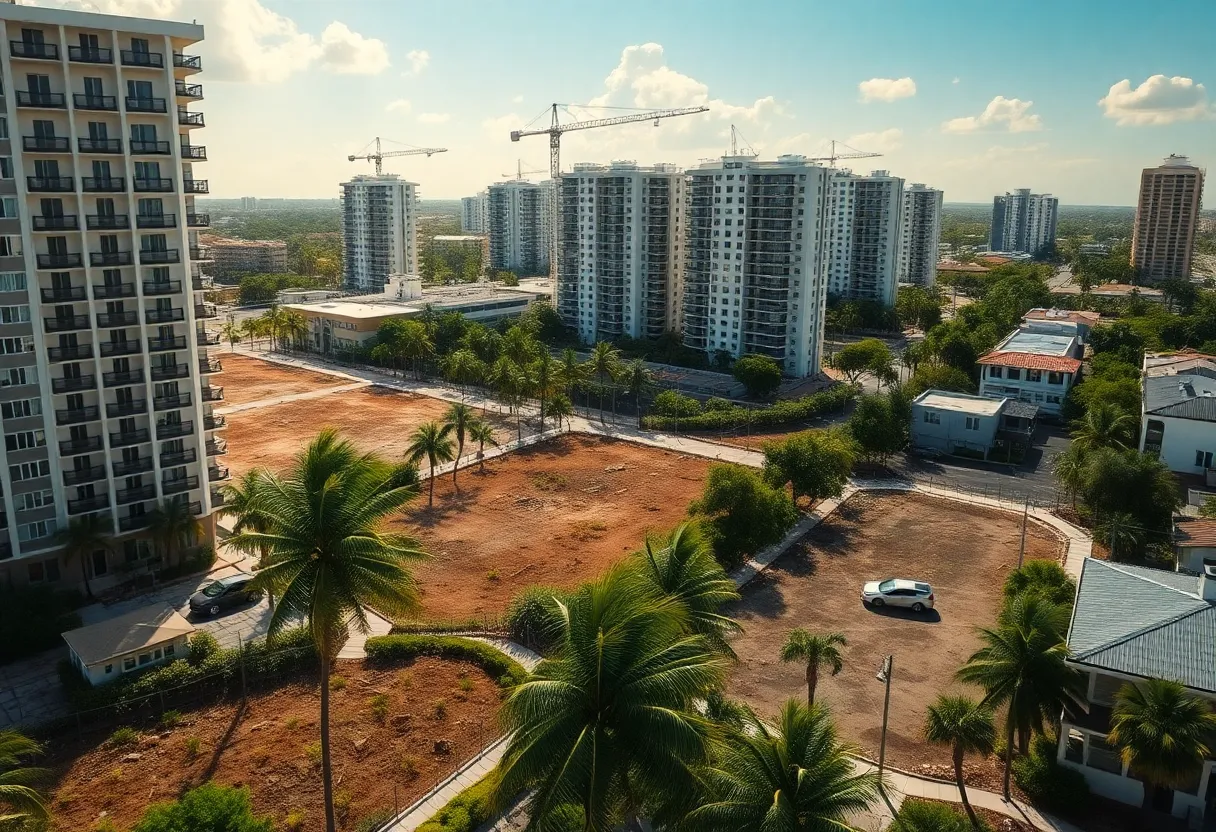

South Florida Housing Contrast
South Florida faces a significant affordable housing crisis, leaving many workers unable to find reasonably priced living spaces. Despite legislative efforts like the Live Local Act, challenges such as rising construction costs and lengthy approval processes hinder progress. Developers express concerns over high rental rates for new projects, while innovative solutions are being explored to address the growing demand for workforce housing. Local governments and nonprofits are pushing to create a more inclusive living environment, striving for a balanced housing market for all residents.
South Florida, a vibrant paradise known for its sunshine and beaches, is now grappling with a significant dilemma: the lack of affordable housing for its workforce. This issue has left local employers feeling frustrated as their employees struggle to find reasonably priced places to live.
The state’s Live Local Act was introduced with the hope of stimulating the construction of workforce housing, but challenges are proving to be a tough nut to crack. Even though the goal is to make housing more accessible, high costs for land acquisition and construction are making it a daunting task for many developers. Interest rates are rising, and as a result, many developers are opting for luxury projects instead of focusing on the much-needed workforce housing.
From 2018 to 2023, South Florida saw a worrying trend: a loss of 10% of its population aged 25-29, as well as a decline in the age group of 30 to 34. What’s to blame? You guessed it—unaffordable housing. The statistics paint a bleak picture, with over 90% of households in South Florida earning less than $100,000 annually. Unfortunately, the available housing prices are well above what many can afford.
Breaking it down, research indicates that more than half of the apartment units being built in 2024 are classified as Class A, which translates to higher rents that are simply out of reach for most workers. Additionally, the condo market isn’t faring any better. There are virtually no new units in desirable areas priced below $500,000, especially in the bustling counties of Miami-Dade, Broward, and Palm Beach.
Construction costs have surged dramatically; it’s no secret that similar projects now require a hefty investment compared to previous years. In areas desperately needing affordable options, the current requirement for housing to fit 120% of the area’s median income poses a significant roadblock.
Developers are actively voicing their concerns about the lengthy approval processes that can delay projects. They advocate for policy changes that would allow for increased density, reduced parking requirements, and lowered fees for workforce housing—measures that could potentially ease the burden on both developers and prospective tenants.
Interestingly, the Live Local Act does provide a potential lifeline, enabling developers to bypass local zoning regulations to build multi-family units on commercial and industrial parcels. However, this is contingent on the stipulation that 40% of those units are available for individuals earning up to 120% of the area median income. Two years since its implementation, no projects have kicked off under this act due to ongoing challenges in securing construction financing.
While some builders have begun to explore less-developed areas as an alternative to lower overall costs, the ongoing demand for workforce housing persists. Part of the solution has also come from collaborations with public entities, leading to partnerships that have successfully launched affordable housing projects.
However, there’s another layer of complexity; developers fear a potential oversupply of apartments could loom on the horizon, particularly with the increasing requirement for workers to return to physical office settings. Adding to such worries are the skyrocketing costs of insurance and construction, which continue to weigh heavily on new development initiatives for workforce housing.
In the quest for solutions, some innovative financing and tax structures are being explored to incentivize the construction of affordable units. Trends towards building micro apartments and smaller units are entering the conversation, reflecting a modern approach to increasing housing availability in crowded urban areas. Technology is also coming into play, with solutions such as 3-D printing and other innovative building methods being investigated to drive down construction expenses.
Local governments and non-profits are relentlessly advocating for the increase of affordable housing options across Florida, pushing forward their mission to create a balanced, inclusive living environment for all. The journey to resolving South Florida’s workforce housing crisis is far from over, but continued efforts from various entities may one day lead to a brighter future for those in need of affordable homes.
News Summary Florida Governor Ron DeSantis has come under fire for his recent statement regarding…
News Summary Sheriff Wayne Ivey of Brevard County has issued a stern warning to demonstrators…
News Summary This Memorial Day, Florida will celebrate and honor the sacrifices of military service…
News Summary Jacksonville University is experiencing backlash from faculty and students following President Tim Cost's…
News Summary Jacksonville University plans to renovate the Kinne University Center's banquet room with an…
News Summary Grant Haefner, a 27-year-old former golfer from Jacksonville University, has successfully qualified for…